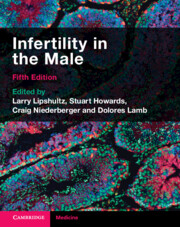Book contents
- Infertility in the Male
- Infertility in the Male
- Copyright page
- Contents
- Contributors
- Foreword
- Abbreviations
- Introduction
- Section 1 Scientific Foundations of Male Infertility
- Section 2 Clinical Evaluation of the Infertile Male
- Section 3 Laboratory Diagnosis of Male Infertility
- Chapter 17 Laboratory Evaluation of the Infertile Male
- Chapter 18 Advanced Diagnostic Approaches to Male Infertility
- Chapter 19 Evaluating Defects in Sperm Function
- Chapter 20 Cryopreservation of Sperm – History and Current Practice
- Section 4 Treatment of Male Infertility
- Section 5 Health Care Systems and Culture
- Index
- References
Chapter 20 - Cryopreservation of Sperm – History and Current Practice
from Section 3 - Laboratory Diagnosis of Male Infertility
Published online by Cambridge University Press: 08 July 2023
- Infertility in the Male
- Infertility in the Male
- Copyright page
- Contents
- Contributors
- Foreword
- Abbreviations
- Introduction
- Section 1 Scientific Foundations of Male Infertility
- Section 2 Clinical Evaluation of the Infertile Male
- Section 3 Laboratory Diagnosis of Male Infertility
- Chapter 17 Laboratory Evaluation of the Infertile Male
- Chapter 18 Advanced Diagnostic Approaches to Male Infertility
- Chapter 19 Evaluating Defects in Sperm Function
- Chapter 20 Cryopreservation of Sperm – History and Current Practice
- Section 4 Treatment of Male Infertility
- Section 5 Health Care Systems and Culture
- Index
- References
Summary
The evolutionary branch from early primates to human beings dates back about 400 000 years (personal communication, Dr Lee Silver, Princeton University), and in that time, man has endured an “ice age.” In more recent history, man’s interest in cellular responses to freezing temperatures has been primarily concerned with his defense against it. The first cells discovered for the microscopic assessment of changes were sperm by van Leeuwenhoek in 1677, and in 1827, Karl Ernst von Baer later discovered the egg [1]. However, it was a very different and difficult concept for the public to grasp that human life can start with two microscopic gametes and that these cells can be frozen and survive thawing [2].
- Type
- Chapter
- Information
- Infertility in the Male , pp. 381 - 398Publisher: Cambridge University PressPrint publication year: 2023

